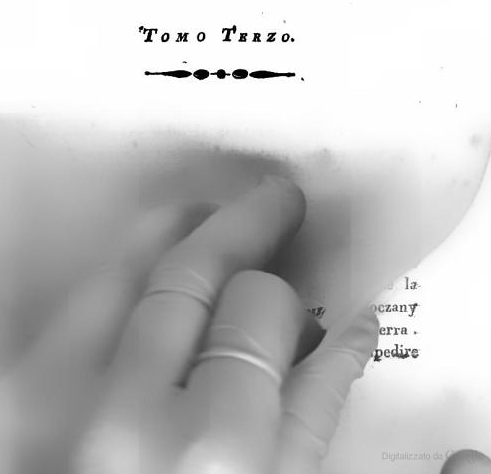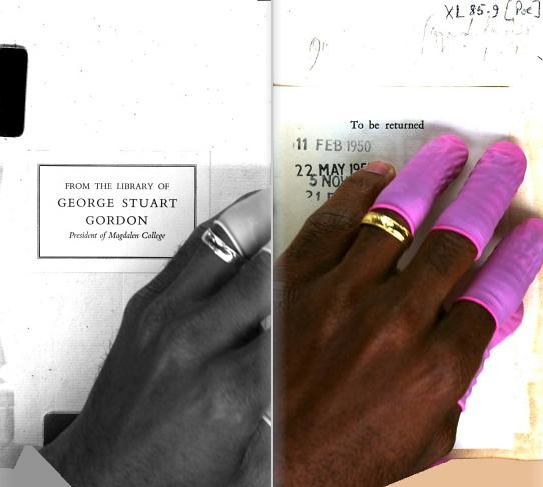''The spines of books on our shelves form a visual database. Continuing the cover image over the spine should remind us of the cover - and the contents of the book.' Derek Birdsall - Notes on Book Design
I have recently become very interested in the spine of a book. Both from a design point of view and an artistic one. I think it has something to do with spending the whole day in the Philosophy Library in Cambridge for the 'in the reflected sky' project. We had a list of the books we were interested in, with thier dewey decimal number and spent the day wandering along the shelves finding the books. The fist contact you would have with a book is when you grabbed its spine and pulled it out. The whole experience of the book, at least in this setting is hinged on the spine and as I sit here looking at my own bookshelves, it is a mass of coloured lines with the concentrated contents of the books all facing out. It is interesting to think of the 'face' of the book not being the cover which is rarely seen from day to day but the spine.
I have come across an artist called Buzz Spector, who has made a body of work that is about the familiarity and relationship to your own personal library. Looking at the archive of books that you surround yourselves with. Why I thought he was interesting for this post is that his work seems to me, to be about the book spine. The spine being the point of contact.
'My work is abstract: it derives from things in nature or things in culture, but it's meant to be understood in terms of the excavation or displacement of its objects from their situations.'
In this image Spector has stacked a reconfigured books from his own library. In a way that removes all connection with content the book, it is just about its form. The way the pages fall and lie flat. The only constant being the spine, which becomes a repeated hollow linking them all together.
In this installation 'Unpacking my library' Spector has arranged his books in order of the height of the spine, from tallest to shortest, on a single shelf in a room large enough to hold them. For me this has focused in on the spine being the centre of the book. Seeing the mass of books arranged in this way you are made aware of how important the spine is. Though this work is a personal collection of books the books themselves are presented as objects. It is the personal connection with the object itself on the shelf that is important, this point of contact.
I want to also take a look at some design considerations when looking at the spine. The design of the spine changing the colour and look of our bookshelves. Having an interest in design it is always interesting to see what considerations the deigner has had.
Two book projects by the deigner Derek Birdsall I find particulary interesting. For a collection of Penguin Education books Birdsall was given the task of dsigning the covers. Here he has used the width of the books to determine the size of the type on the spine. Seen together the literal weight of the book is represented by the weight of the type. Giving the spine a prominece in the whole design of the book. 'The titles were the thing, and I decided to exploit the varying spine widths typographically'
Here the spine of the book is central to the design. With the image making reference to the structure of the book and vice versa. 'I carefully placed the groom's hand to rest on the spine of the horse and the book'. It is a playful game with the anatomy driven precision of Stubs' paintings and the formal tradition of bokbinding.
So now when you are next in a library or just gazing at your bookshelves take some time to consider the spine. Not just as a carrier of the books infomation but as that first contact you have with the book. The spines facing out on the world waiting for you to grab them.
[George]
Refrences / Further Reading
- notes on book design, Derek Birdsal, 2004
- Buzz Spector, http://www.pergl.net/buzz/index.html





































